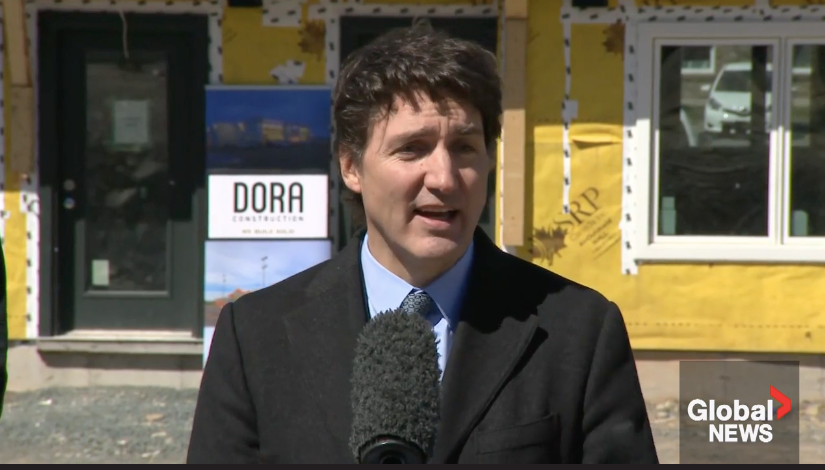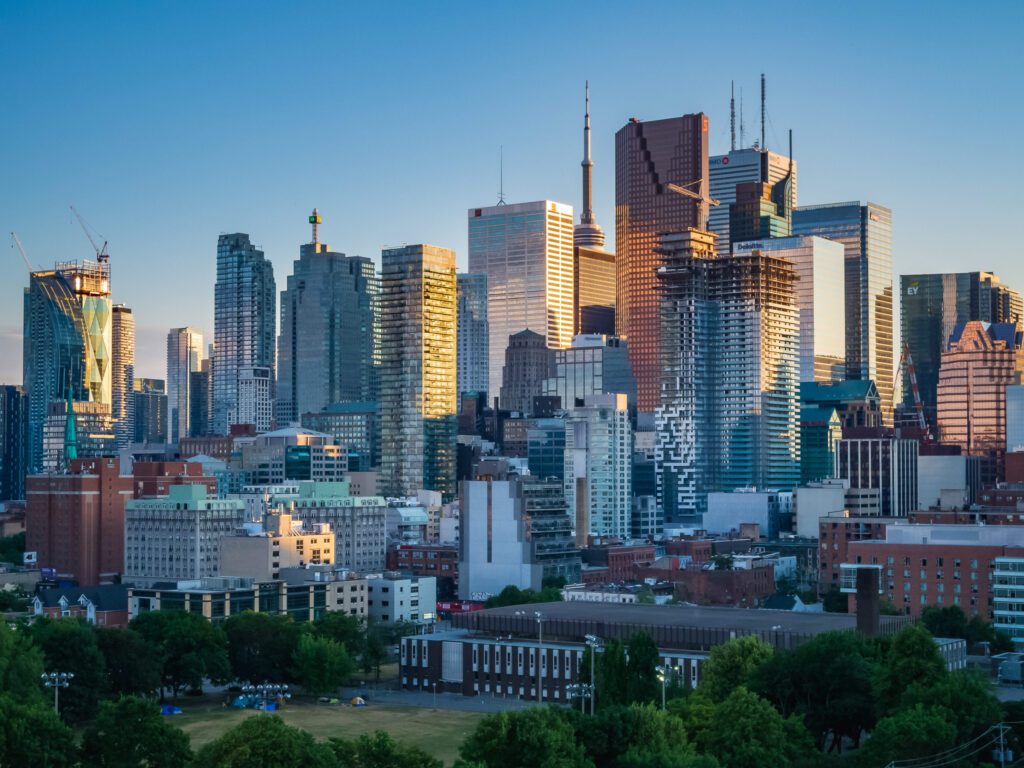There is nowhere in Canada where you can escape the effects of mass immigration into our country. Everything has become more expensive as an explosion in population creates an explosion in demand for goods and services, our social services are crumbling under the pressure of wave after wave of migrants, and our cities have become seedy hellscapes of fear and loathing.
Perhaps you think you should just get away from it all and head to some northern backwoods city. You can find a nice quiet neighbourhood and raise your children in a place reminiscent of the Canada you grew up in – good blue-collar jobs, wide open spaces, friendly neighbours, and crisp, clean air. You will find peace there, right? Think again. With over half a million people coming to Canada every year since 2015, the cities are filling up. Immigrants are starting to spillover into Canada’s rural areas as low-wages and high-housing prices push them out of the cities ruined by Canada’s unsustainable immigration policy.
Canada’s bustling northern rural regions have not gone unnoticed by those who seek to profit from Canada’s mass immigration induced demise. Rich in resources but low on people, these rural areas are ideal places for corporate land developers to employ their mass immigration based money making schemes. In an article in the Peace region’s Town & Country News, it reported that the northwestern Alberta city of Grande Prairie will be relaxing restrictions on secondary rental suites to address an alleged shortage of lower-cost homes in the city.
These changes are coming in response to recommendations from BILD Grande Prairie, a local lobby group created by and paid for by regional land developers, homebuilders, and construction companies to be “a voice for the homebuilding, land development, and renovations industries throughout Grande Prairie and area”. According to BILD chair Jordan Gregson, “many municipalities in Alberta are implementing increases to density and access to lower cost housing by relaxing land use bylaws and incentivizing secondary suites”. BILD has stated that if there are no complaints after two years of loosened restrictions, they hope that the Grande Prairie city council will remove all restrictions to secondary suites! The development, homebuilding, and construction companies which created BILD Grande Prairie would obviously benefit from these changes.
Land developer and city councillor Wade Pilat is very supportive of these recommendations, saying that when he goes through other Alberta communities, he “sees nothing but secondary suites all over the place” and that “he wants the changes to happen soon”.
The thing is that Grande Prairie does not really have any sort of housing crisis. According to the Grande Prairie & Area Association of Realtors, the median home price in the city is $322,750. The government of Alberta reports that median family income in Grand Prairie in 2020 was $120,000, and Careerbeacon.com has single income in the city at $59,650. A quick perusal on the internet finds multiple single and two-bedroom apartments for between $1150-$1300.
There is also plenty of space in the Grande Prairie region, so there is no reason for “densifying” the city. The Peace region of Alberta, where Grande Prairie resides, is larger in size than South Korea and has a total population of less than 300,000.
It is to the credit of past city planners that despite Grande Prairie being a rough and tumble resource city that has doubled in population over the last twenty years, it has maintained many affordable single-family neighbourhoods. One of the reasons for this balance of growth and affordable peaceful neighbourhood quietude is that Grande Prairie has maintained robust land use bylaws that have protected single-family zoning.
There are many negatives that are certain to result from relaxing and then potentially axing all restrictions on secondary rental suites in Grande Prairie:
- Overcrowded streets (where will everyone park?). More cars parked on the street will probably impede snow removal programs.
- Pressure on infrastructure that was designed for single-family homes (taxpayers will be forced to shoulder the resulting upgrades and repairs).
- Quiet, single-family neighbourhoods will likely become much less safe for children and pedestrians due to increased traffic.
- Peaceful, family-oriented neighbourhoods are liable to become places full of transient tenants and moving trucks instead of communities of neighbours.
- Most secondary rental suite redevelopment will occur in older neighbourhoods with lower housing prices. Investors (who likely do not live in the area) will buy most of these up and turn them into rental properties. This will make housing prices rise and shut out many middle-class, first-time home buyers.
As we are seeing in other municipalities like the city of Calgary, the goal of city councillors and land developers is to eliminate affordable single-family zoned neighbourhoods.

Developers will want to buy up older homes and convert them into highly profitable multi-family units. City councillors would benefit from the rise in property taxes within a concentrated area that comes with redeveloped neighbourhoods – as declared secondary rental suites will come with an increase in property taxes. The people who are pushing for these changes probably do not live in the areas that will be negatively affected by them. Most of the wealthy folk in the Grande Prairie area live on fancy acreages or in the luxury subdivisions that are scattered around the edges of the city, far away from the discord that densification policies will create.
The preoccupation of city managers and special interest groups across Canada to densify single-family neighbourhoods is representative of Canada’s new norm of mass immigration municipal zoning strategies. These strategies shift the focus of community planning from promoting quality of life to facilitating quantity of life. This shift in focus is a reaction to the housing crisis that has resulted from too many people coming to Canada in a short period of time due to federal mass immigration policies. Where previously the primary concern of city managers was maintaining peaceful neighbourhoods, managing traffic flow, and cultivating a sense of idyllic quietude, the priority has shifted to facilitating the cacophony of mass immigration and diversity.
This shift in priorities is encouraged by the Trudeau Liberals through refugee resettlement programs which allocate funding to smaller cities that agree to provide social assistance and municipal programs to make it easier for immigrants to find jobs and learn English. Poilievre’s Conservative Party not only wants to provide even more funding for programs like these, but also plans to cut funding to municipalities that don’t get on board with mass immigration municipal zoning strategies that eliminate affordable family neighbourhoods. This amounts to extorting taxpayers with their own tax dollars. The overall aim of these policies is to create cheap housing for the vast numbers of low-wage workers that both parties intend to keep cramming into our country.
There is nowhere to escape from mass immigration municipal zoning strategies. Grande Prairie is just another Canadian town following the template where municipal densification plus mass immigration equal profits for politicians and land developers who will live far away from the inhumane conditions they create. If politicians and lobbyists are willing to introduce this formula in a town with ample room for growth and plenty of affordable housing like Grande Prairie, they will do it anywhere.
Especially at the municipal level, the politicians and developers who are selling out our country mostly rely on an unengaged citizenry that sits back and allows them to do so. They sneak their mass immigration municipal zoning policies under their constituents’ noses with talk of affordability and equity, knowing they will be too distracted to ask many questions. Yet it is at the municipal level where individual citizens can have the most impact towards influencing public policies that directly affect their lives.
There are no politicians at any level of government in this country who want to preserve the Canadian tradition of affordable single-family home neighbourhoods. Even in communities where densification policies aren’t necessary, politicians will still implement them, tearing neighbourhoods apart to facilitate population growth fuelled by mass immigration. The only way to save these neighbourhoods is for individual citizens to get active at the municipal level by informing their fellow community members and engaging with city managers to let them know that you don’t want them to ruin your community.
All content on this website is copyrighted, and cannot be republished or reproduced without permission.
Share this article!




The truth does not fear investigation.
You can help support Dominion Review!
Dominion Review is entirely funded by readers. I am proud to publish hard-hitting columns and in-depth journalism with no paywall, no government grants, and no deference to political correctness and prevailing orthodoxies. If you appreciate this publication and want to help it grow and provide novel and dissenting perspectives to more Canadians, consider subscribing on Patreon for $5/month.
- Riley Donovan, editor